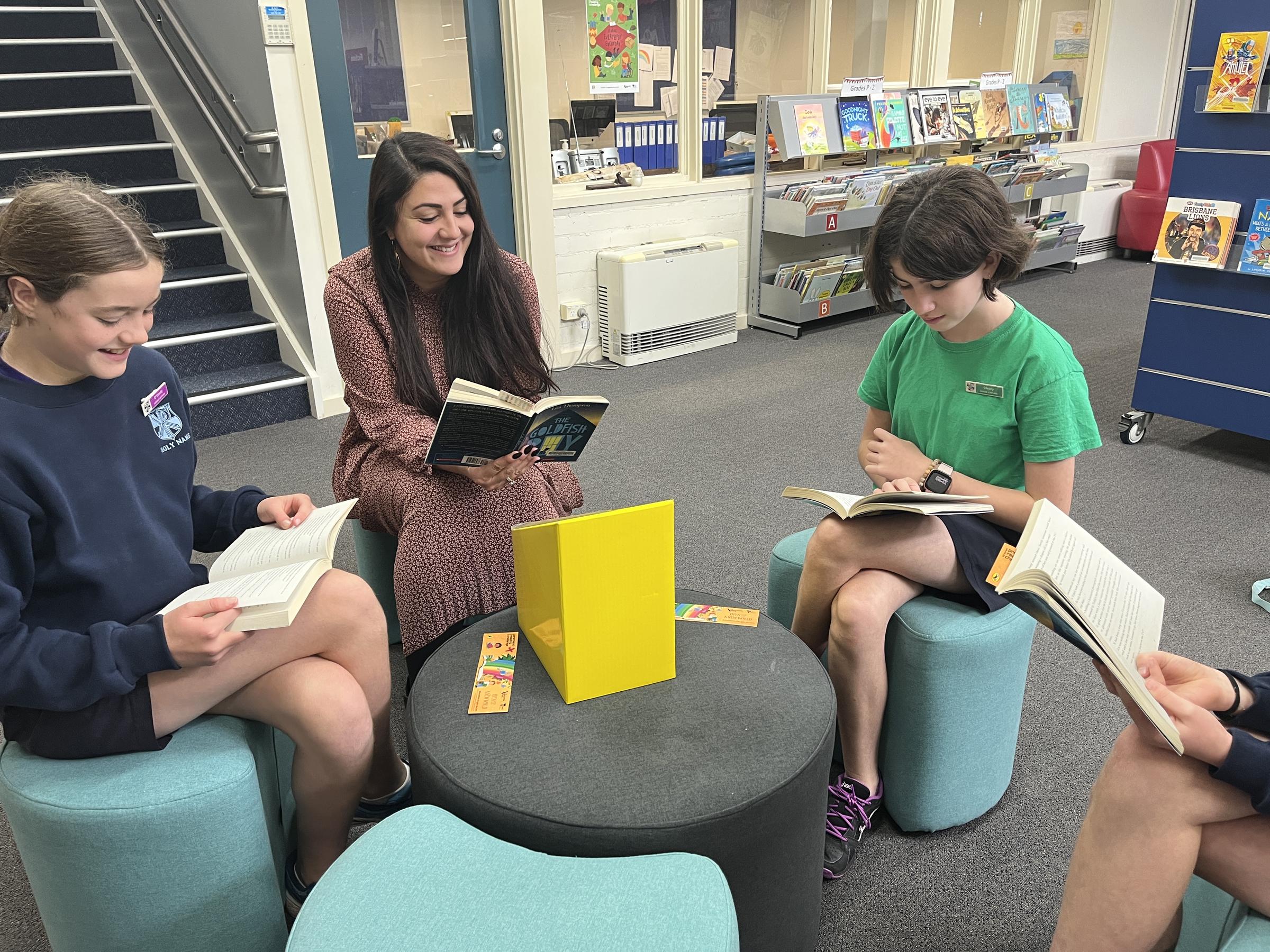LITERACY /
LEARNING & TEACHING
Mrs Maria Lontos

LITERACY /
LEARNING & TEACHING
Mrs Maria Lontos
As teachers, we often hear comments from parents and sometimes students themselves, that the books that come home for Home Learning are 'too simple' or 'too short' or 'too easy'. In most cases, this is a strategic practice where we want to encourage children to focus on deepening their comprehension skills with familiar texts that are easy enough to decode independently, without much intervention from an adult. We want to focus on this, particularly because having a good grasp of comprehension strategies is a key indicator of reading achievement.
Comprehension means understanding text: spoken, written and/or visual. Comprehension is an active and complex process which:
- includes the act of simultaneously extracting and constructing meaning from text;
-enables readers to derive meaning from text when they engage in intentional, problem solving and thinking processes;
-is a lived and institutionally situated social, cultural and intellectual practice that is much more than a semantic element of making meaning.
Department of Education Victoria, July 2021
There are three levels of comprehension that we focus on and teach, so that we can deepen understanding for students; literal, inferential and evaluative. These levels of comprehension appear in the curriculum from Foundation all the way through to the senior levels of high school. It would be great if you started to use some of the question stems below when listening to your children read, so that you can consolidate the learnings that they do daily in the classrooms. Just because a book is easy, and your child can read it efficiently and fluently, remember there is always room to improve their comprehension and deepen their understanding which will ultimately lead to improved reading achievement.
Literal Comprehension | Inferential Comprehension | Evaluative Comprehension |
|---|---|---|
This is the simplest form of comprehension and occurs at the surface level where the details are stated directly in the text and are clear to identify. | At this level readers are required to use their prior knowledge of a topic and identify clues within the text (words, images, sounds) to make an inference. A little more like reading ‘between the lines’. | This level requires the reader to go beyond the text and consider the bigger picture. At this level, readers are required to have opinions and viewpoints related to the message in the text and be able to justify their thinking. |
|
|
|


We had a great response from our Classroom Helper form on Operoo last week. Two training sessions have been set up for those that have not yet done this with us in the past. If you have done the training previously, you DO NOT have to do it again. You do however have to sign an updated Code of Conduct which can be handed up to Leanne at the school office. This document is attached below.
Session 1 - Wednesday 8th May at 9am
OR
Session 2 - Thursday 16th May at 9am
If you cannot attend either session, please feel free to email me and we can make another arrangement.
It is school policy that all classroom helpers have a current Working with Children Check and sign our school's Code of Conduct. These forms for the card are downloadable from the Department of Justice website (http://www.workingwithchildren.vic.gov.au/). Please note that as you are a volunteer, your card is free.